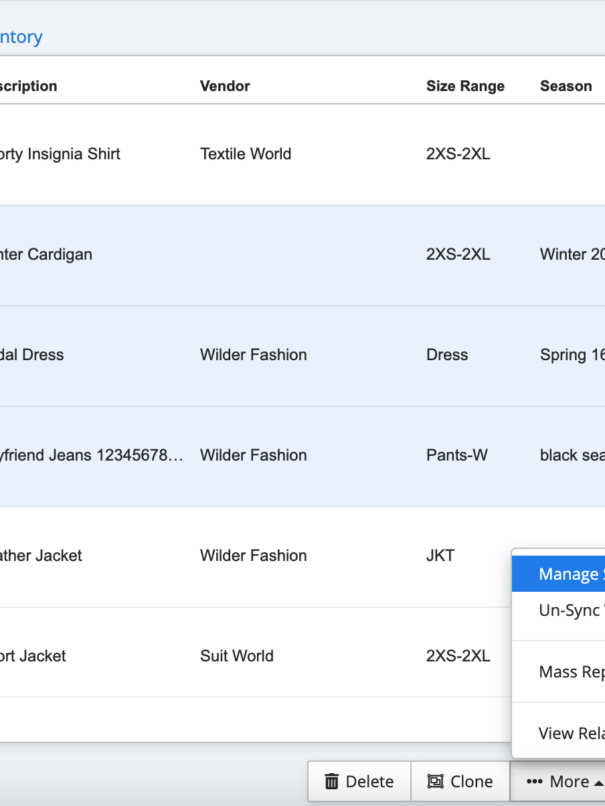How does a designer’s idea for a fashion item become a three-dimensional product that potential customers will be able to purchase? Production management is the crucial link in the fashion supply chain, transforming an idea into a tangible product that is offered for sale.
In this blog post, we go over the key phases of developing a fashion product as well as how to efficiently manage production utilizing cutting-edge production management software.

Image by drobotdean on Freepik
What is Production Management in Fashion
Production management is used in the manufacturing industry and includes procuring raw materials, transforming them into finished products for the target market, and overseeing the entire process.
In the clothing industry, production and operations management describes the process of creating a piece of clothing from start to finish. Production and operations management covers every step of the manufacturing process, from acquiring the raw materials for the creation of garments to organizing the tasks needed to transform them, supervising the process, managing the workers properly, and even delivering the finished products to customers.
6 Main Stages of Product Development in the Fashion Industry
Product development in the fashion industry is made up of several processes that need to be completed before a finished product is created. The 6 main stages of the product development process are listed below.
1. Visualizing an idea
During this stage, the designer visualizes the product by drawing design concepts and making multiple sketches for different versions of the design. After a clear concept has been created, you can proceed to the next development step.
2. Tech pack creation
Think of the tech pack as the manufacturer’s “blueprint” for creating your clothing. It’s a design document that contains drawings and details about the suggested clothing item, including the fabrics, add-ons, and finishing touches that will be employed in its production. The tech pack’s main objective is to assist in determining whether the fashion item is feasible and prepared for production.
3. Preparing a cut sheet
Every tech box should contain a cut sheet or specification sheet which includes all of the crucial measurements required by the manufacturer such as the length of the clothing, the hip, waist, and chest sizes. A common specification sheet will vary the measurements for the various sizes (like XL, L, M, S, etc).
4. Making samples
Design teams collaborate with clothing manufacturers (clothing factories) to produce the first iteration of the designed clothing. Making samples allows fashion designers to see how a garment will appear in use. Additionally, it is utilized for fitting purposes to see how the clothing looks on a target-size model. The process of making samples typically involves multiple iterations before the final sample is accepted. The designer may opt to change some design elements, such as selecting a different type of fabric or asking for small adjustments to the specifications.
5. Product manufacturing
Once the final sample has been authorized and the materials have been sourced, it is time to manufacture the product. The entire manufacturing process is divided into a number of smaller sub-processes that might vary depending on the equipment at hand, the working techniques employed, and the workers’ skill levels. In addition, depending on the kind of factory you work with, they may provide a complete production package as well as assistance with locating supplies and packaging.
6. Quality assurance
Quality control is the last phase of fashion design and product development, during which you should check each article of clothing (or a specific percentage for large quantities) from the production batch to ensure that they all meet your requirements and provide the desired effects. The discrepancies in color shades, fabric flaws like poor fiber quality, construction flaws like exposed notches, loose threads, or stains, and measurement variations are some of the key considerations when evaluating the quality of a garment. The quality assurance checklist should be made before production starts. The manufacturer will then use it as a reference manual while working on the product.

Image by Freepik
Production Management Software
Production management software is a category of ERP (enterprise resource planning) software that is used by businesses that produce their own goods. This type of software helps businesses in the fashion industry to manage, organize, and track the manufacturing of their products.
Production management software assists managers in planning projects, keeping track of a company’s budget, and tracking the progress of each stage of the production process. You can use the system to shorten lead times for quicker delivery, monitor any changes to expected costs or completion dates, track inventory, and streamline your supply chain.
The best product management software solutions for fashion retailers and clothing manufacturers have the following features:
- Data collection in real-time on dashboards and mobile for performance indicators analysis
- MRP and scheduling
- Scheduling and tracking workers
- Complete product history and workflow visibility
- Fully automated EDI processing
- Control over yield, scrap, and rework metrics
- Powerful dashboards and diagrams to visualize workflows
- Detailed labeling capabilities
Benefits of using production management software
Aside from being a convenient way to monitor your clothing company’s operations, production management software can also help you save money. The flexibility of cloud-based software is one of its most important benefits. It not only enables you to view your data virtually anywhere, but it also makes it possible for you to collaborate and communicate with everyone involved in the production process regardless of where they are located.
This type of software can also help you manage projects more effectively. Whether you are leading a project within your own clothing business or serving as a vendor for a third-party client, product management software provides you with improved visibility into project details and important milestones. This makes it possible for you to monitor the status of your project at any given time and make the required modifications or adjustments to finish the job successfully.
The Bottom Line
There are numerous processes involved in the fashion production process, including conceptualization, design, manufacturing, and delivering products to customers to satisfy customer demand.
Fashion brands of all sizes adopt modern production management software to assist in running the production process quickly and effectively, taking care of all parts of apparel production, and ensuring that the desired results are achieved. You can maximize your clothing production process with improved inventory management and integration with your favorite business tools.
ApparelMagic offers a flexible and user-friendly solution for fashion brands looking for production and inventory management centralized to a single dashboard.







